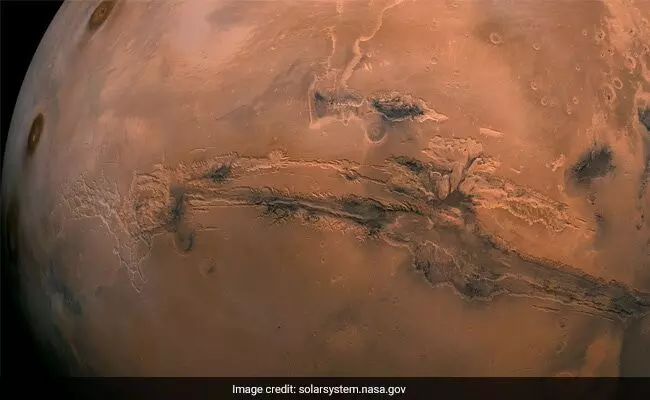
Signs of soaked sand dunes, rushing rivers found by NASA, China Rovers on Mars
text_fieldsOn the red planet, rovers from China and NASA have discovered evidence of gushing rivers and soaked sand dunes. The rover from China discovered proof that dunes may have been cemented together by frost as recently as 400,000 years ago. According to a National Geographic article, NASA's Perseverance spacecraft discovered evidence that a swift, strong stream had carved its way into the Jezero crater, discharging water at an incredible rate.
Science Advances published the findings. Zhurong, which made its way to Mars in May 2021 after failing to awaken after a programmed hibernation period—possibly as a result of dust buildup on its solar panels—landed there, NDTV reported.
The largest river on Mars has been discovered by NASA's Perseverance mission. According to the height of the rock formations, the river was deeper than 66 feet in some areas. These are sandbars that have been conserved, according to scientists.
Both findings, according to Jani Radebaugh, a researcher at Brigham Young University in Utah "highlight the fact that it's really valuable to put things on the surface of the other planets."
Water traces were found on the Martian surface by China's rover. A crust has formed on certain sand dunes close to the rover, most likely as a result of water interacting with the minerals. According to Nat Geo, the water may have come from previous frosts that developed on the dunes or it may have fallen as snow hundreds of thousands of years ago when the planet's tilt may have permitted snowfall in this area.
The crusts imply polygonal structures that have evolved, contracting and expanding. "To have these sort of shrinking and expanding features suggests there is relatively recent or modern or ongoing wetting and drying that's happening in these dune regions."
According to NASA's Mars Curiosity project member and planetary scientist Ralph Milliken of Brown University, the dust on Mars is packed in minerals that can absorb water vapour from the surrounding atmosphere. If that material covers the sand dunes, seasonal humidity variations may allow the dust to absorb water vapour and release it again without ever turning it into liquid.
"These are likely things that are forming in lots of different places on Mars," Milliken says. "This might be a process that could be occurring over a large chunk of the planet in the recent geologic past."
Perseverance analysed the remnants of a strong stream as China's rover investigated the dune soakings.
According to data from the NASA rover, ancient rivers that once flowed across the planet were far deeper and moved much more quickly than previously believed. The river was part of a system of canals that ran through Jezero Crater. It's notable as it's the region the rover has been investigating ever since it landed more than two years ago in the hopes of eventually finding evidence of prehistoric microbial life.
''Those indicate a high-energy river that's truckin' and carrying a lot of debris. The more powerful the flow of water, the more easily it's able to move larger pieces of material. It's been a delight to look at rocks on another planet and see processes that are so familiar,'' said Libby Ives, a postdoctoral researcher at NASA's Jet Propulsion Laboratory, in a NASA release.
Perseverance has been studying the top of an 820-foot-tall pile of sedimentary rock for the past two years. The pile has curved layers that resemble flowing water and is made of sedimentary rock and stands 820 feet (250 metres) tall. One of the brand-new Mastcam-Z mosaics captures the ''Sprinkle Haven'' site, which is a part of the curvilinear unit.





